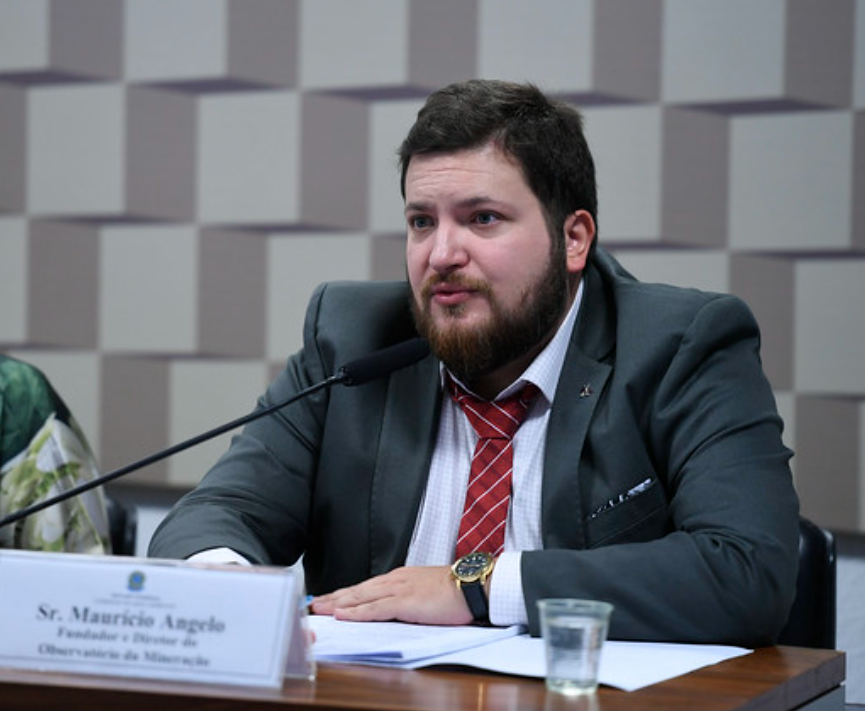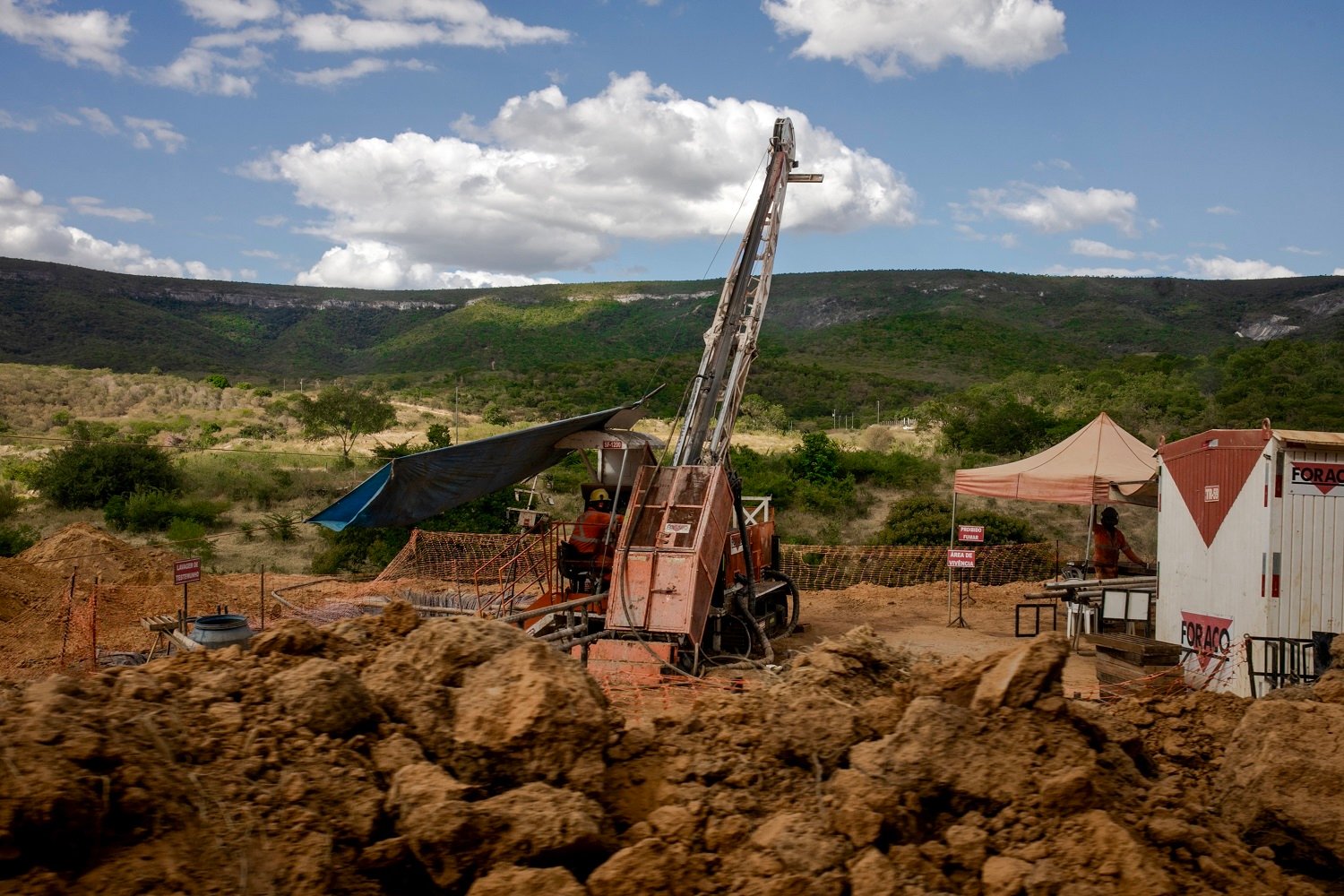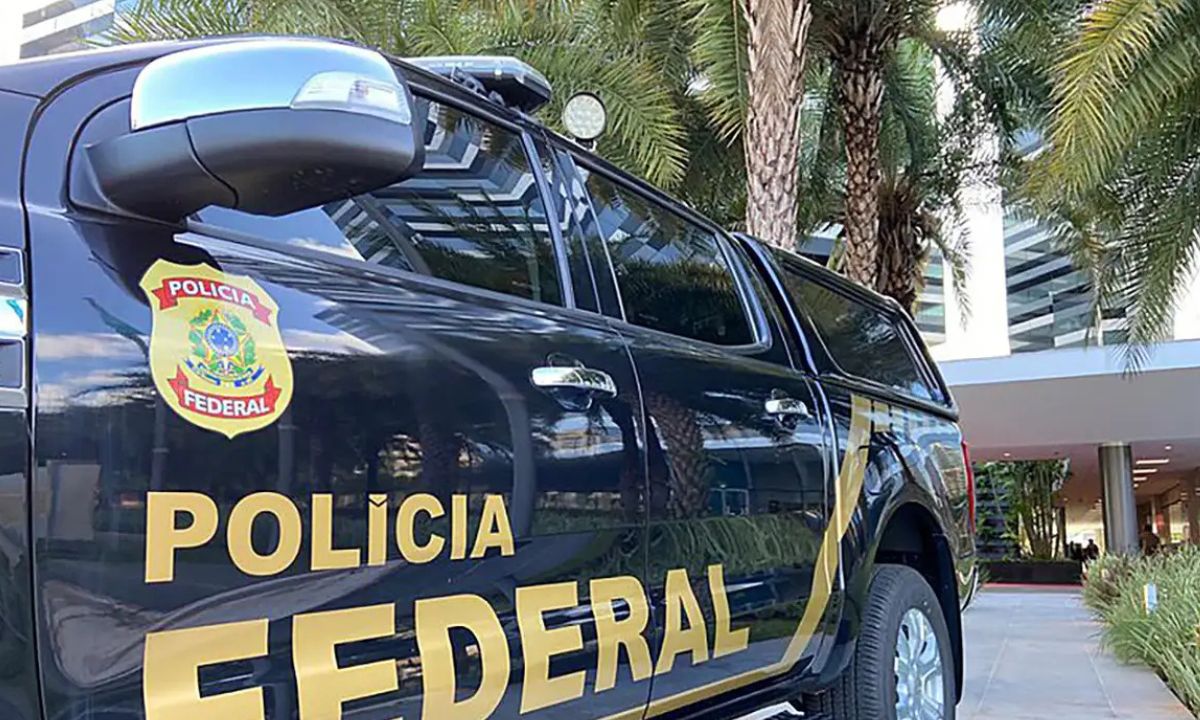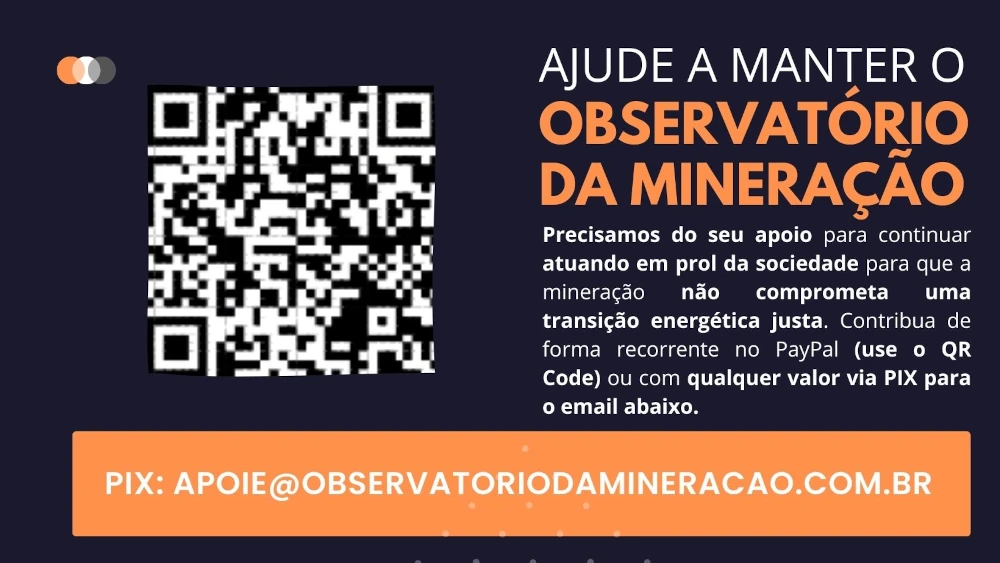By Maurício Angelo and Sarah Sax
Photos by Ingrid Barros
Seen from above, the Indigenous Territory Mãe Maria is a 62,000 hectare square of green surrounded by farms and cattle pasture just outside of Marabá, the largest city in southeast Pará. The forested land is cut through entirely by the BR-222 highway.
It is a stark contrast to the urban center of Marabá, the headquarters of steel and mining companies just 25 miles down the highway from the Indigenous territory. It’s a city right in the middle of the so-called “Arc of Deforestation” where countless Brazilian flags on farms and in shops represent the strong support that former president Jair Bolsonaro still has in the region.The green belt that the Mãe Maria IT represents in a heavily devastated area of the Amazon stands in contrast to this.
The IT, ratified in 1986, is home to around 1000 Indigenous Gavião Akrãtikatêjê, Gavião Kyikatejê and Gavião Parkatêjê peoples, living in an area of 62,000 hectares divided into 22 villages. The proximity to the urban center of Marabá, however, which is less than 30 minutes away by car, poses a heightened security threat.
The entrance to each village is protected and guarded by iron gates, security posts, and Indigenous watchmen, who only allow outsiders to pass through after checking information and with an invitation from the leaders of the Gavião people.
It was after months of conversation that we obtained permission to access the Mãe Maria IT. Despite so much security, however, the biggest enemy of the Indigenous people is located permanently inside of their territory: the multinational mining company Vale.
The Carajás Railroad that transports Vale’s mining products through the southern part of the Mãe Maria Indigenous Territory has been installed there since the 1980s. Its ownership is a typical Brazilian anomaly : the part occupied by the railroad, even inside the indigenous land, is not officially considered part of the Indigenous Territory.

Vale has achieved an exception, a parallel state within IT, to guarantee the transport of hundreds of millions of tons of iron ore through this railroad that is essential to the company’s business and the global chain of mining and steelmaking.
It is via the Carajás Railroad that the minerals extracted from Serra dos Carajás, which is home to the largest open-pit iron ore mine in the world and also deposits of copper, manganese, nickel and gold, are transported almost a thousand kilometers to the Port of Itaqui in São Luís, Maranhão.
From there, the ores are exported in gigantic bulk carriers mainly to China.
The continuous expansion of the Carajás operation, especially the S11D operation, one of the largest private projects in the history of Brazil, guarantees Vale’s position among the five largest mining companies in the world. In recent years, Vale has broken continuous records for profits: R$95.9 billion in 2022 and R$121 billion in 2021.
Along the railroad, which carries the doctrine of development defended arduously by Vale, the reality is a trail of human rights violations. The ore exported by the railroad contributes to the strength of the global steel industry, especially in China, where Brazilian ore is transformed into more than 1 billion tons of steel per year, half of the world’s production.
For the Indigenous people of the Mãe Maria TI, the permanent threat of trains running uninterrupted inside their territory is about to get worse: at the end of 2022 and after years of negotiations, the Indigenous people of Mãe Maria were pressured into an agreement to authorize the duplication of the railroad.
The story about how this agreement was reached, however, reveals old colonial practices that large mining companies, like Vale, are experts at.

Divide and conquer
“Many communities don’t understand each other. Vale makes the head of one, makes the head of another, keeps playing one against the other and once they managed to dominate, it became difficult for us to fight. That’s why I gave up”, Zeca Gavião, 55 years old, chief of the Gavião Kyikatêjê village, told us sitting on bleakers on a pleasant afternoon in the Amazon, after training the Gavião Kyikatejê Football Club, a professional soccer team made up largely of Indigenous players
Zeca has commanded the village for many years and lives with his wife and 8 children in the IT. Until very recently, he was one of just a few dissenting voices within the Mãe Maria IT against the agreement proposed by Vale for the duplication of the railroad.
The lack of support among his peers stems from a complicated history with the mining company that began with the building of the railroad in 1985, the ratification of the Indigenous territory, and various agreements made since the 1980s between the Indigenous communities and Vale.

Faced with community dissatisfaction and the rupture of the agreement made in 2015 between Vale and the Indigenous villages, Indigenous villagers blocked the railroad and Vale started not complying with part of the monthly payments it owes to the villages. During the pandemic, the scenario worsened. Everywhere in Brazil, Indigenous people were much more affected by Covid-19 than the general population, suffering from lack of state support, isolation, and high Covid-19 rates among other factors.
Eventually the pressure increased and after over a decade of protesting the duplication of the railroad, Zeca Gavião ended up accepting the terms proposed by Vale, against his will.
“I was left alone and they used that as an argument, that only I was going to fight for the covenant. I was forced to accept. It was not an agreement. An agreement is when you say: look, I have this condition, I don’t agree, but I want it. Vale said: I have this possibility of helping you, if you don’t want it, you can go to court. Then they came up with that big number. It’s a lot of money, they accepted and accepted and Vale won by sheer fatigue”, Zeca relates.
The problems caused by the existing railroad, according to the cacique, are several, starting with the cultural impacts of the Gavião people themselves. “Today the Gavião people are no longer what they used to be. Vale has addicted my people in such a way that it took them a long time to understand what was happening”, says Zeca.

Kátia Silene, the chief of Akrãtikatêjê village agrees.“Vale is not nice, Vale is not our friend, Vale is not good,” says Chief Silene. “Vale is an iron dragon that when it goes away will leave only a graveyard. It ended the life of the Gavião and Xikrin people and created a crack in the middle of the indigenous society. No money will ever cure what Vale brought. They gave us a pittance.”
She has seen firsthand how multinational companies can wipe out entire communities and territories. Her village was forced to move to the Mãe Maria territory in the 1980’s when Electronorte created a dam and displaced over 30,000 people, many of them Indigenous people and peasants. She was one of the last remaining chiefs to refuse to sign the negotiation with Vale, protesting for over 10 years until finally giving in. “We have held back a lot, delaying from 2011 until 2023,” she said. “But there was never a court that said ‘no, the indigenous people won, you can’t duplicate, you can’t do it.’ So we fight for ourselves, because there is no justice, just our hunger.”
She says the effects of the railroad are already widely felt, and will only become amplified when an additional track is constructed. “Our rivers, our territory, our environment, our flora is not as it was before because of the ore dust, because of the fuel that goes down our river, our fish are contaminated,” she said.
Before we speak to Chief Kuia Parkategê, another chief who until recently had declined to sign Vale’s agreement, he tells us to visit the railroad ourselves. The railroad track is accessible via a miles-long dirt road that cuts through thick green foliage. Emerging from amidst the towering trees overhead, the railroad track cuts a straight line through the territory, dozen’s of feet of deforested land flanking the 9 mile stretch of tracks.

The impacts on the flora and fauna, the sound, the deforestation and degradation was never mentioned fully in the company’s reports, Chief Kuia told us. “Vale wants to give us money to deforest a huge strip alongside the existing railroad so it can increase its profits,” says Kuia. “But how can you put a price on those trees, on all the animals that will die crossing the railway tracks or flee from the noise? There is no price for that.”
The way that the negotiations happened was very irregular, he tells us. Compensation to the individual villages wasn’t done based on a logical manner, instead money was used to play different villages off against each other, says the indigenous leader.
The compensation received by the indigenous people from Vale, besides causing conflicts and disunity, also causes internal and external problems, such as robberies on paydays, made worse by the highway that cuts through the territory. Zeca was even kidnapped years ago. Hunting and the right to come and go has also been affected. The sentry boxes were created as a way to try to mitigate these risks.
Despite being forced to accept the agreement to duplicate the railroad, Zeca Gavião intends to continue fighting in the courts so that Vale no longer legally holds the area occupied by the railroad as its property. Instead, he is fighting for it to be back in control of Indigenous people.
The original ratification decree which formalized the Mãe Maria Indigenous Territory, published by former president José Sarney in 1986, excluded from the limits of the Indigenous Lands the Vale railroad, the Eletronorte power lines, and the BR-222 highway. At the time, there was no need for prior consultation with the indigenous people, as provided for by Convention 169 of the International Labor Organization, ratified into law in the 2000s by Brazil. The time of the decree also predates the Indigenous rights won by the 1988 Constitution.

Today, prior consultation is mandatory, as are the environmental impact studies and the consent from the National Indian Foundation (Funai) and the licensing process from Ibama.
“I haven’t stopped, I’m going to fight again. My fight is for the Constitution, which says indigenous land is non-negotiable. We continue here. But Vale sees that the land is theirs. I want this to be reviewed, that the area of the railroad belongs to the indigenous land”, he stated.
He said that together with his lawyer, he is in the final stages of seeing how they can appeal to have the IT decree reviewed, which also impacts the format of compensation made by Vale, which he questions as “unfair and irregular”.
While the mining company advances with the licensing to continue the duplication work, Zeca has questioned the 10-year agreement – called PBA, Basic Environmental Plan. While the BPA on paper is decided with the communities, Zeca highlighted the lack of indigenous autonomy over the direction of the projects, the fact that the evaluation of whether or not the results will be in Vale’s hands, and the possibility of it not being renewed in a decade.
Zeca told us that he visit other indigenous villages that have the model of PBA and see that they have no guarantee for the future. “I went researching to have an argument with Vale, and I saw that it’s not good, it’s not safe for the community. I know that my people will increase, grow, and they won’t have the support they had”, says Zeca.

The agreement, which lasted from 1986 to 2015, provided support for health, education, productive activities, surveillance of the reserve, administration, and culture. This included a multidisciplinary team of a dentist, surgeon, nurse, agricultural technician, education technician, and financial consultant, with one team per village.
But there have been setbacks, such as the withdrawal of Vale’s support for high complexity health procedures, which is not covered by the specialized Indigenous health care offered by the Ministry of Health, focused on basic attention. In recent years, under Jair Bolsonaro’s administration, Zeca also complained that federal administration bodies have sided with Vale.
“The agreement guaranteed this for us and over time it was cut, cut, cut, my people didn’t understand, I was fighting alone. We didn’t have any support from Funai and Ibama in the Bolsonaro government. When negotiating with Vale, I didn’t see Funai speaking for us, but for Vale. It was difficult. We were at our own mercy”, he says.

The Federal Public Ministry was called in as an intervening party. Attorney Luís Eduardo Araújo, who works in Marabá, says that Vale added an automatic readjustment trigger of 20% to the compensation agreement decided on in the BPA as soon as the duplication was approved. A way to pressure and “encourage” the Indigenous people. Thus, the agreement ended up happening.
“The MPF has always said that it was not in good taste to mix two separate issues. One thing is the standard agreement and another is duplication. Vale said no and put this trigger in place,” he says.
According to the prosecutor, the Indigenous people have highlighted that the cumulative impacts that tend to worsen with the duplication, such as loss of animals, noise, safety risks from crossing the tracks, and access to the main river in the region, which is the Tocantins, which they are cut off from by the railroad.

Zeca worries about the future.
“The anthropologists didn’t have the vision to say what our cost of living would be with the railroad going through. There is no guarantee of anything by Vale. What is the guarantee for my people, children, grandchildren?”, he questions.
Without the Carajás Railroad, it will be impossible for Vale to achieve the record profits of recent years and the continuous export operation that, from the beginning to the end of the value chain, keeps global steel production and the flow of commodities essential for many industries, from steelmaking to electric cars and cutting-edge technology.

One of the main funders of the so-called Great Carajás Project, still in the 1970s and 1980s, was the World Bank.
Today, large American investors have significant participation in Vale, such as the Capital Group, with more than 14% of the shares and Black Rock, the largest investment fund in the world, which has 5.7% of shareholding control of Vale. The Japanese conglomerate Mitsui, a historical partner of the mining company in several businesses, has 6.3% of the shares.
From 2016 to 2021, Vale also received more than $35 billion in loans and investments from various global financial groups, including Vanguard, Crédit Agricóle, Commerzbank, Citigroup, Bank of America, JPMorgan Chase and others, according to the report “Complicity in Destruction IV,” by Amazon Watch and Mining Observatory.
All these institutions will benefit directly and indirectly from the duplication of the railroad in the Mãe Maria TI.
At the end of 2020, Vale managed, together with the Jair Bolsonaro government, the early renewal of the federal concession of the Carajás Railroad for another 30 years. Now, the mining company can use the railroad until 2057. In the agreement, which also involves other railroads owned by Vale, the mining company will pay R$ 11.8 billion in concession fees to the federal government.

Ravaged by dictatorship, Gavião people see Vale sophisticating its strategies
The Mãe Maria TI is also cut by the Eletronorte power line, installed after the construction of the Tucuruí hydroelectric plant. The series of large industrial enterprises explains the context of historical conflict that the indigenous Gavião live in.
The Akrãtikatêjê people, for example, were expelled from the Tucuruí area in the 1970s and forcibly brought to what is now the Mãe Maria IT region.
The military dictatorship was responsible for continuously violating indigenous rights to favor these large enterprises: the hydroelectric dam and the transmission lines, the highway and Vale’s Grande Carajás Project. The report of the National Truth Commission, published in 2014, provided laundry list of violations.
Like many other Indigenous peoples who were almost wiped out by the military dictatorship, the large construction projects in the Amazon, persecutions, removals, diseases brought by colonialists, and direct attacks, including chemical weapons dropped by airplanes, the Gavião lost 70% of their population. Yet they survived.
Vale took advantage of the ensuing conflicts and the internal and historical divisions among the Gavião people, said researcher Giliad Silva, professor at the Federal University of Southern and Southeastern Pará (Unifesspa).

“Vale knows how much this affects its image, especially with minority partners. And the mining company learned in the 80’s and 90’s that it was not possible to seek consensus among the indigenous people, because then they would become too strong. That’s why it started to assign employees to what they call community relations”, says Giliad.
Vale began to encourage the division of the indigenous people into more villages and more families, to make it easier to negotiate piecemeal and to put pressure on smaller villages. In the pandemic, the situation worsened.
“In the pandemic, some were in a very difficult situation. Without the compensation transfer from Vale, and the added fear and pressure from the mining company. Vale fought to unify the processes,” confirmed Giliad.
Vale brought together the original railway line and the duplication to the negotiating table and in a period of political and economic uncertainty, in combination with the ongoing pandemic, was able to sidestep proper consultation to achieve its goals.

The territorial rights disputes, as well as the non-Indigenous slices of land owned by Vale, Eletronorte and the federal highway also attract the action of loggers, land-grabbers, and other criminals.
All this, including the time, energy, and articulation needed to negotiate and fight with Vale, still prevents the indigenous people from effectively planning for the future and being able to dedicate themselves to broadening the horizon of the discussions, as said by Zeca Gavião, stuck in immediate agendas. Unifesspa has a research group, coordinated by Giliad Silva, that tries to help in this process.
“The indigenous people of the Amazon want to plan their future 20, 30, 50 years from now. They want to discuss agendas such as the “Bem Viver/Buen Vivir” (an indigenous concept of lifestyle very strong in Latin America). But in recent years this has not advanced. They end up being prevented from thinking about the agendas they consider important”, says Giliad.

Vale says it respects indigenous autonomy
Sought by the report, Vale claims that it follows all current regulations, that it has a long relationship with the indigenous community, that the duplication construction have already started and should be completed in 2024 and that it respects the autonomy of the indigenous people. Vale sent the following not:
“The licensing process for the Carajás Railroad Expansion Project complied with all current regulations, including free, prior and informed consent, with the production of an Indigenous Component Study (ECI) and its Basic Environmental Plan (PBA-CI), which were approved by the Indigenous Community and by FUNAI, as the agency for promoting the Indigenous Policy. As for the actions established in the agreement, the Company points out that they are the result of a long-term relationship established with the community, resulting from a permanent process of dialogue, discussions and deliberations, thus, not constituting compensation action of the mentioned project.
The EFC area belongs to the Union, with Vale being the public service concessionaire. The construction of the Road Expansion Project will be carried out within the railroad’s right of way in the municipality of Bom Jesus do Tocantins in a section adjacent to the Mãe Maria indigenous land. The expansion comprises the construction of a second line next to the existing main one, with approximately 15 kilometers, between km 694 and km 712 of the EFC. The works started and will involve infrastructure activities such as earthworks and railway superstructure (placement of trillion and sleepers) with conclusion expected in 2024.
Regarding the environmental aspects generated by the railway operation, Vale emphasizes that environmental controls and monitoring programs are established (whether related to noise, air quality, among others) in compliance with legal parameters, attested by the environmental inspection body itself.
Vale maintains an open and constant dialogue with the indigenous people, listening to them on an ongoing basis. However, the Company does not get involved in the political processes of the communities. The rescission processes of the past were carried out within the legality and legitimacy of the agreements entered into, being replaced by new agreements established between Vale and the indigenous community”.
This story was developed with the support of Journalismfund.eu.

A first version of this story was published on Mongabay.

Maurício Angelo is an award-winning international investigative journalist and the founder of Mining Observatory, a Brazilian based investigative journalism Centre established in 2015. Researcher at Sustainable Development Center at the University of Brasília (UnB). He publishes in many media outlets in Brazil and around the world and was the winner of the Excellence in Journalism Award (2019) by Inter American Press Association. Considered one of the Top 3 journalist experts in the Extractive Sector in Brazil in 2022 and 2021. He has been actively pursuing investigations, publishing a broad range of stories related to governance and transparency, corruption and lobbying, indigenous peoples, human rights, labour rights, climate change, justice, commodities trade, Amazon, Cerrado, land conflicts and the role of extractives.

Sarah Sax is a freelance investigative journalist focused on deforestation, land conflicts, and commodities in the Americas. She reports for print and broadcast. Previously she worked on Vice News Tonight on HBO’s climate and environment desk and was a climate justice reporting fellow at High Country News. She was awarded the Front Page Award for best investigative magazine feature in 2022, and her work has been honored by a variety of associations such as the Society for Environmental Journalists and the National Association of Science Writers.
Descubra mais sobre Observatório da Mineração
Assine para receber nossas notícias mais recentes por e-mail.





